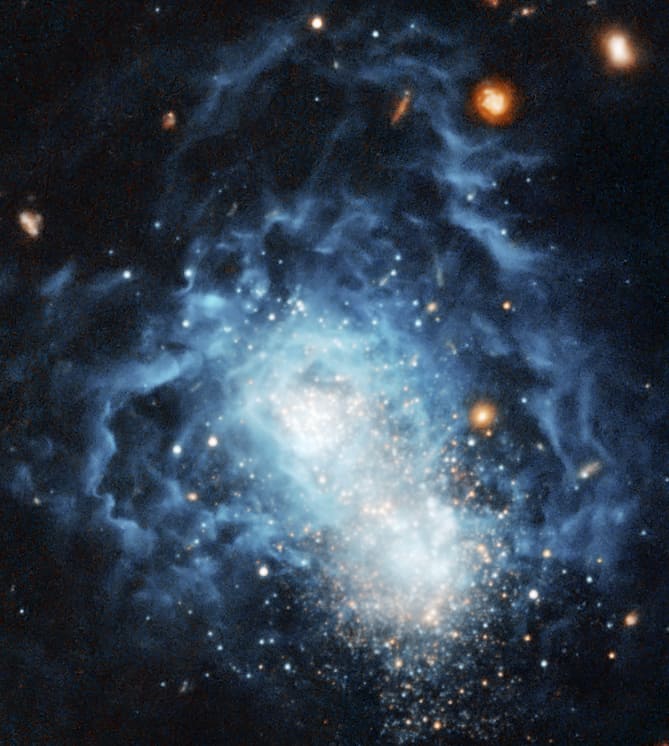The Cosmos with I Zwicky 18a
I Zwicky 18 is a dwarf irregular galaxy located about 59 million light years away in the constellation Ursa Major. The galaxy was first identified by Swiss astronomer Fritz Zwicky in a 1930s photographic survey of galaxies.
Studies at the Palomar Observatory some 40 years ago led astronomers to believe that the galaxy erupted with star formation billions of years after its galactic neighbors. Galaxies resembling I Zwicky 18’s youthful appearance are typically found only in the early universe. Early observations with the Hubble Space Telescope suggested an age of 500 million years old for I Zwicky 18.[4] The Hubble Space Telescope, however, later found faint, older stars contained within the galaxy, suggesting its star formation started at least one billion years ago and possibly as much as ten billion years ago. The galaxy, therefore, may have formed at the same time as most other galaxies.
